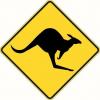Hi Tom. Just in case - i'm not arguing against CBN wheels, only suggesting that they may need a bit more care in choice of bench grinder they run on for sharpening edge tools than a friable stone. Those Metabo machines look dead nice, and your experience confirms that. I thought of one, but could find one locally or in low speed format..




 Reply With Quote
Reply With Quote






